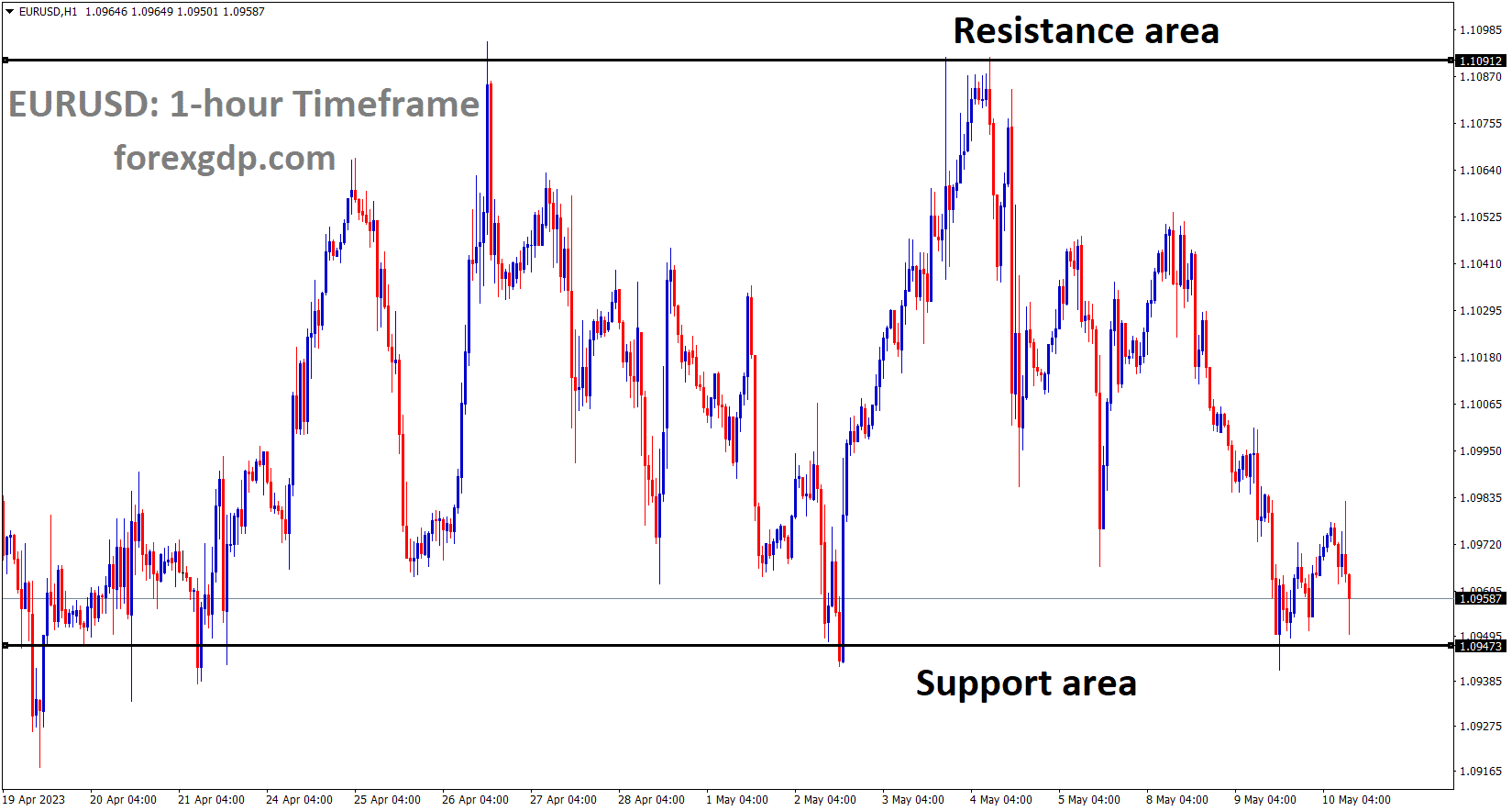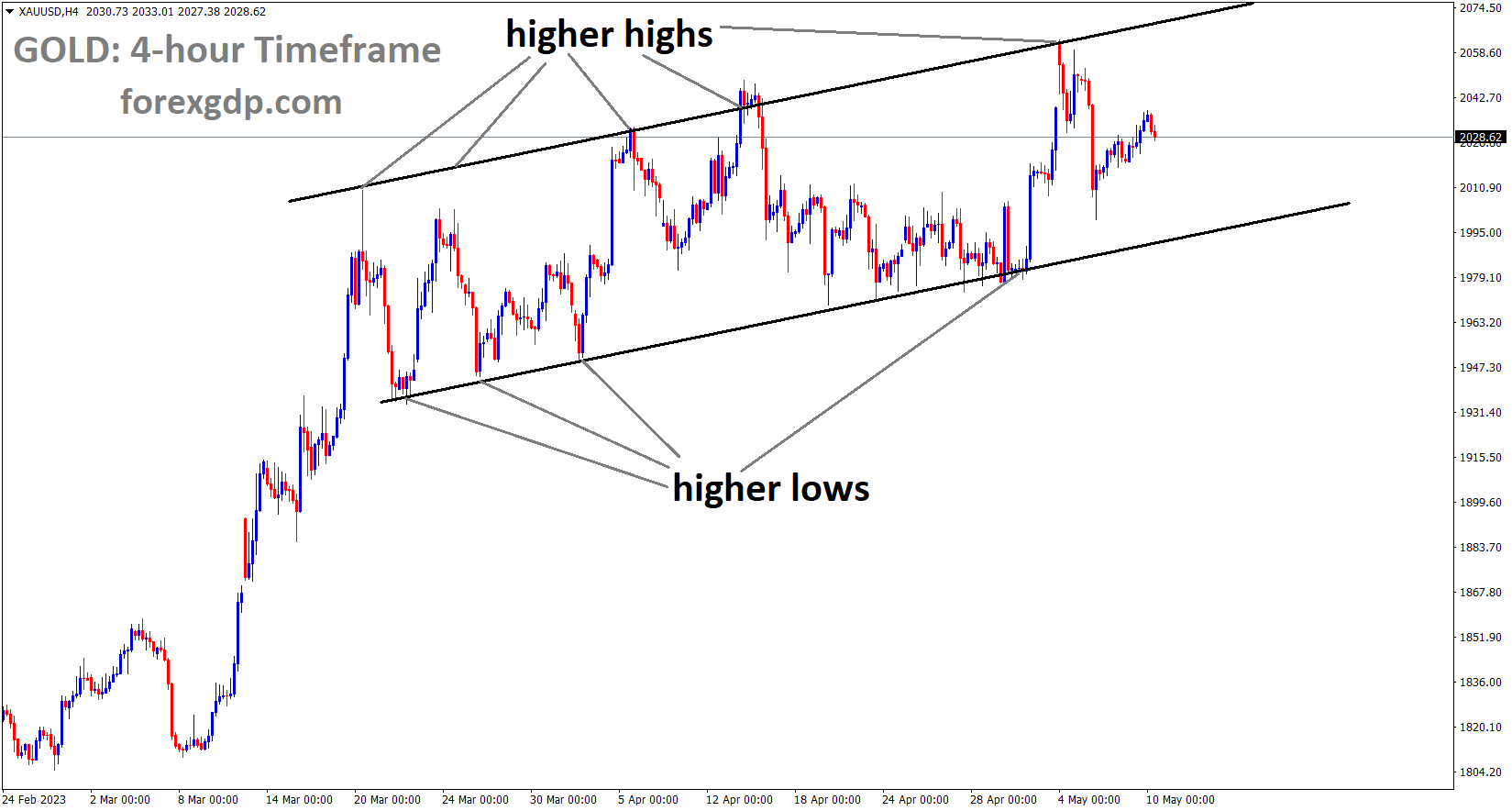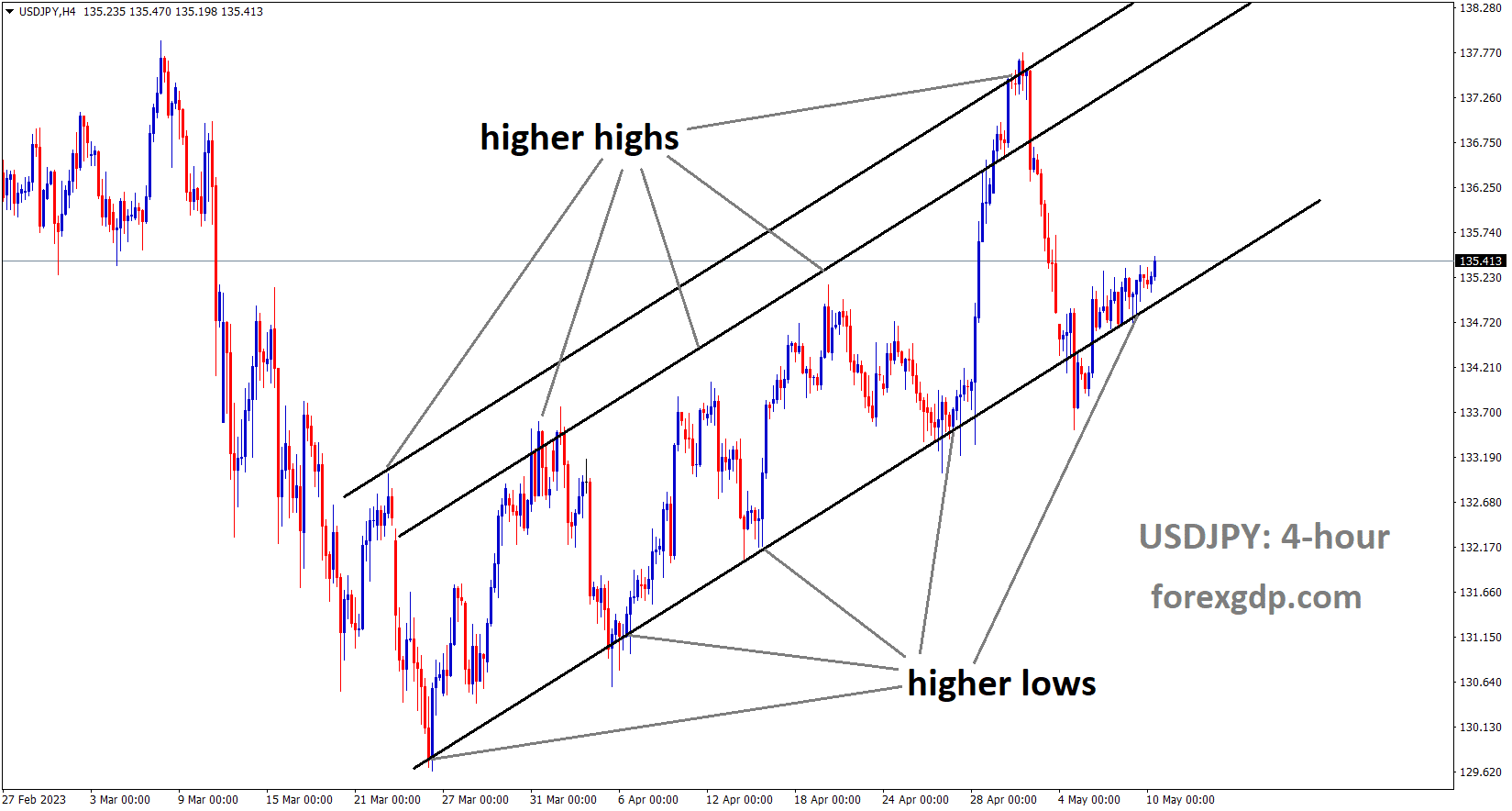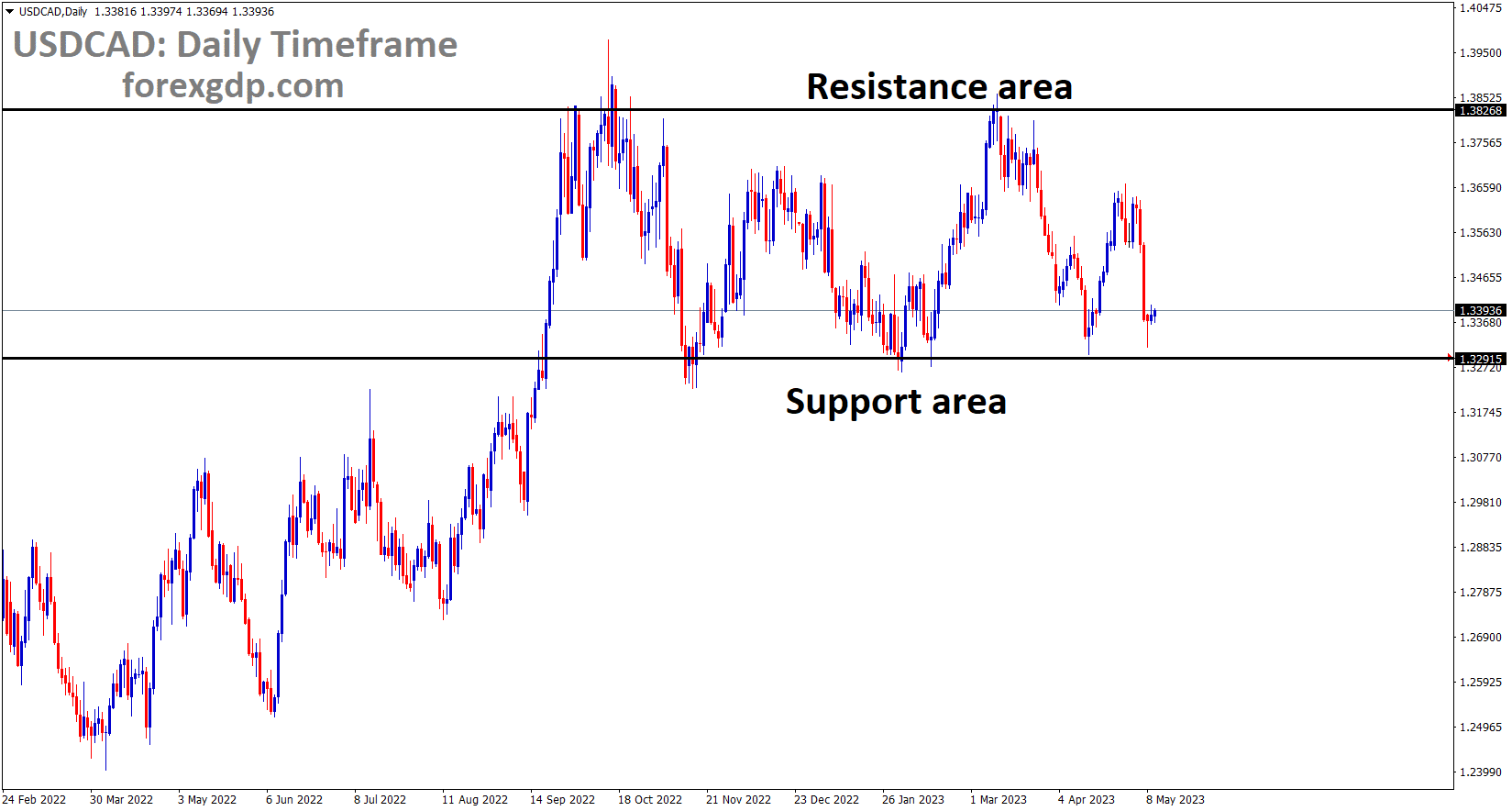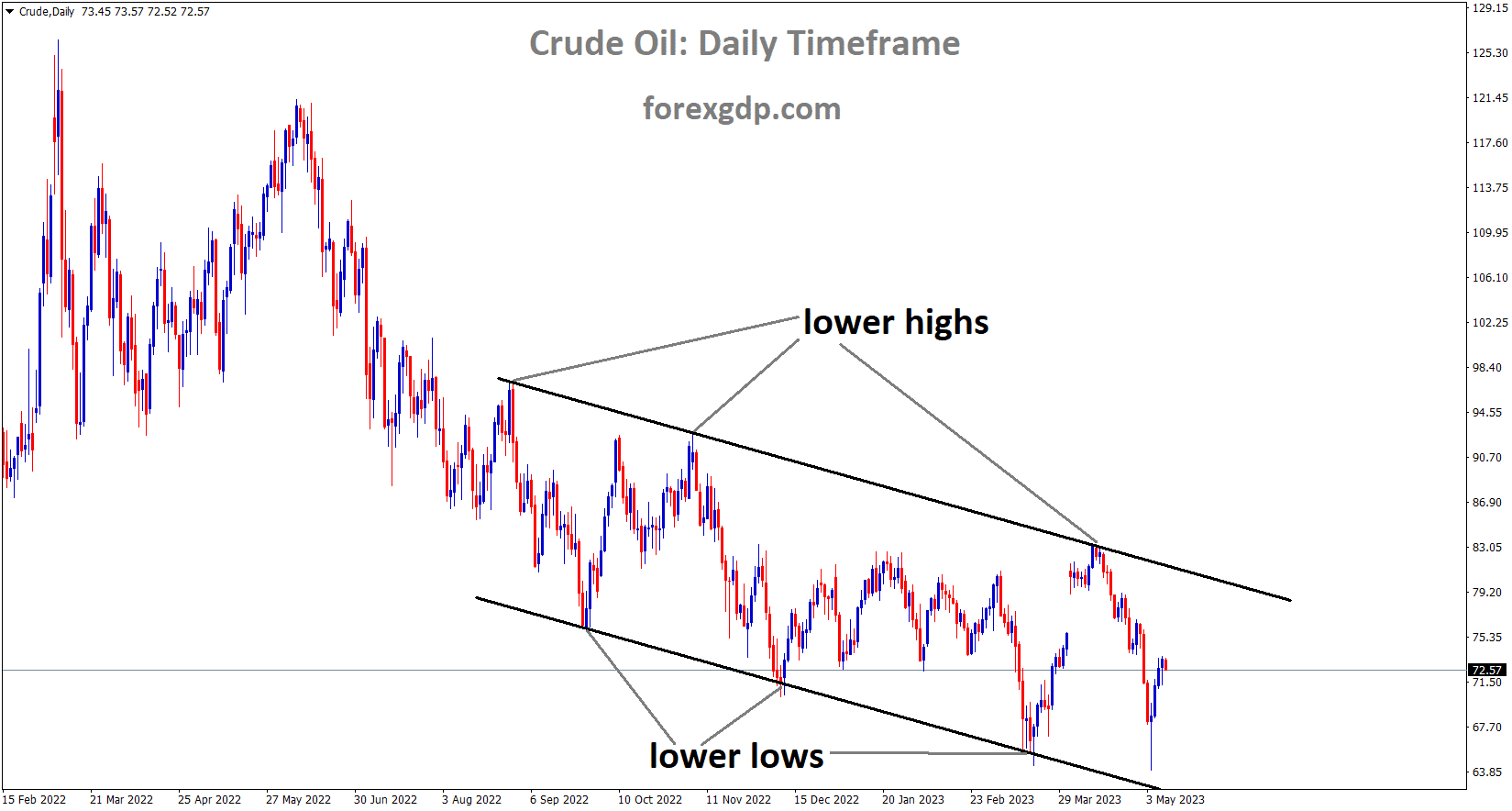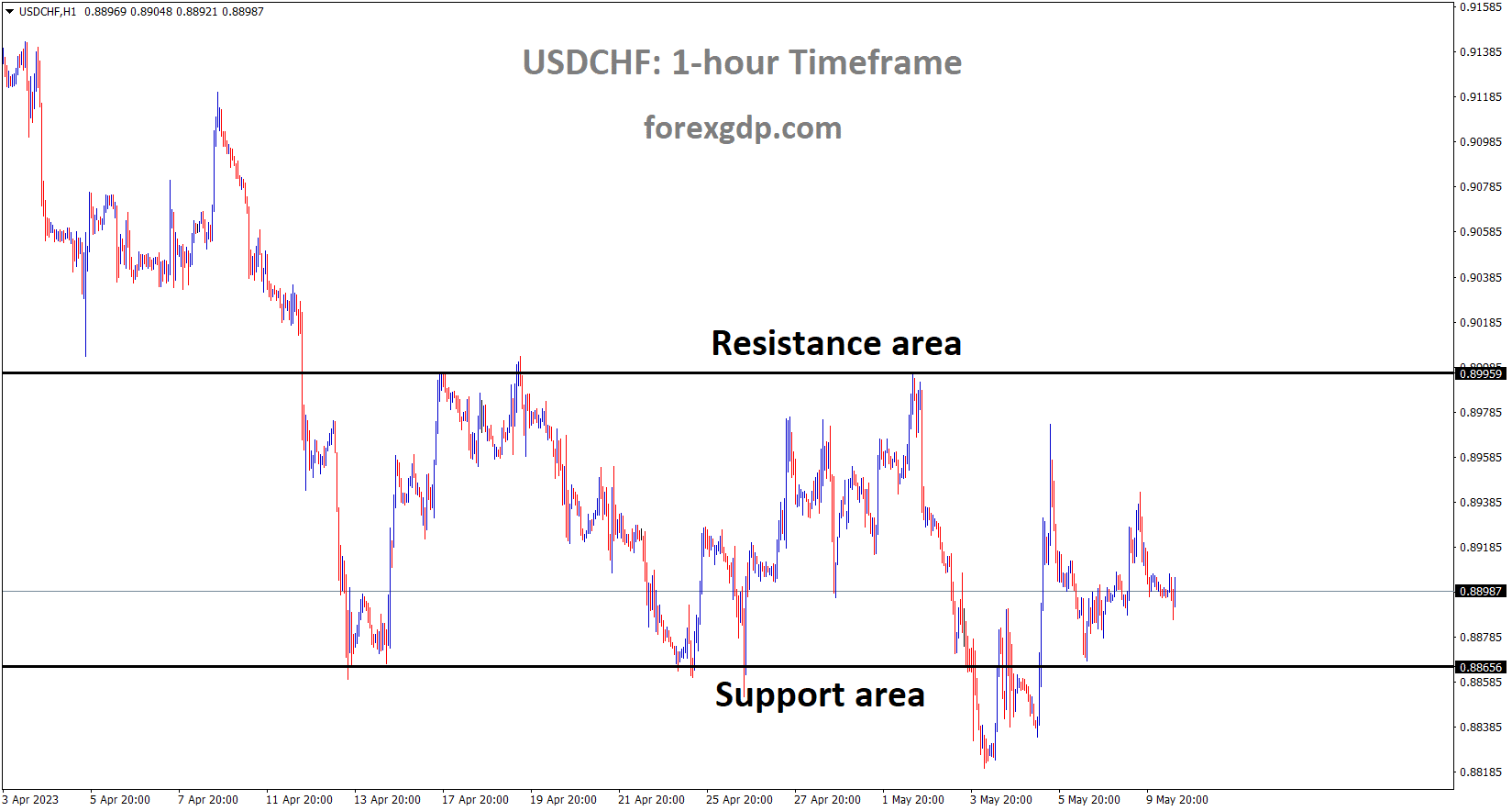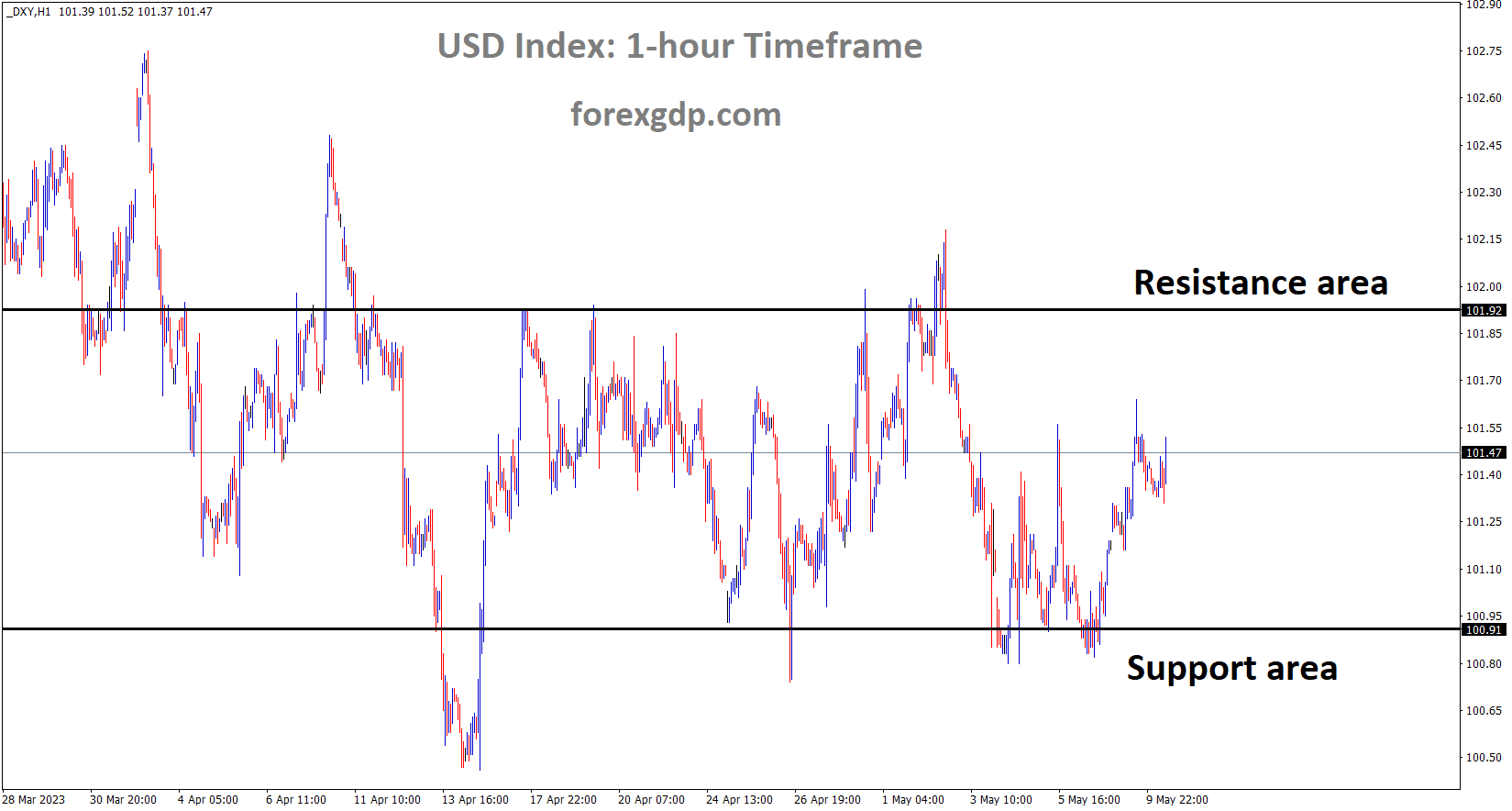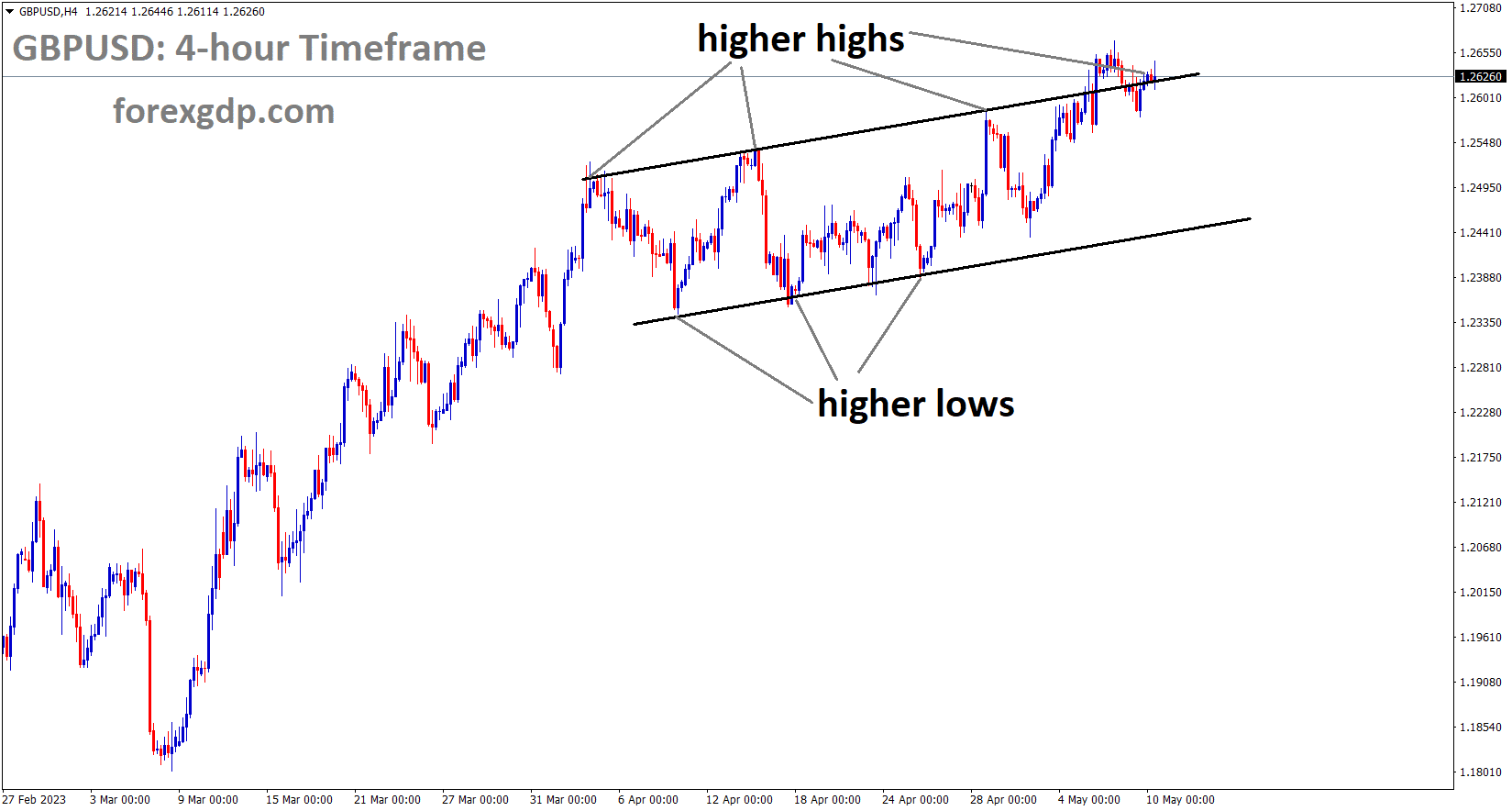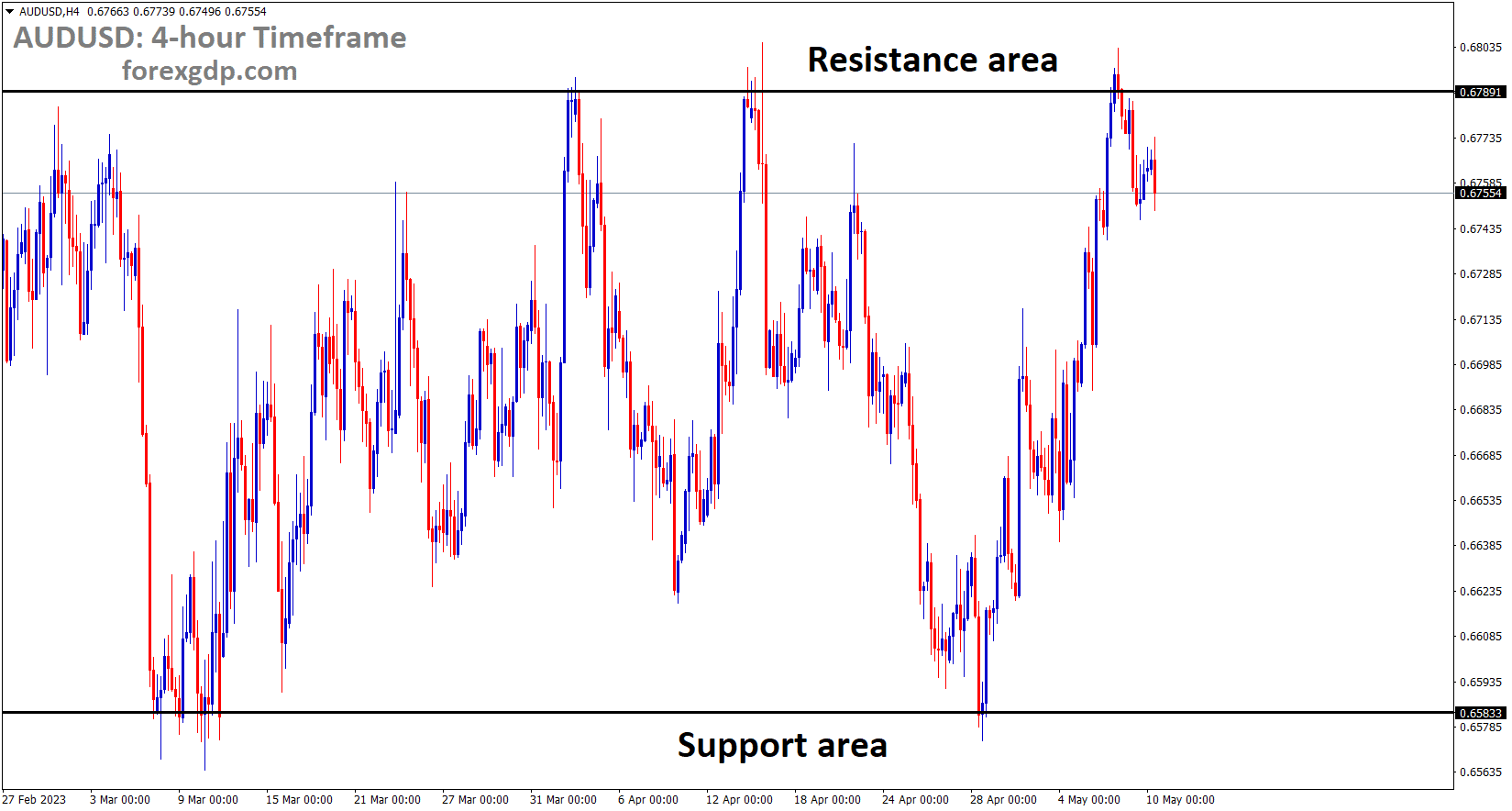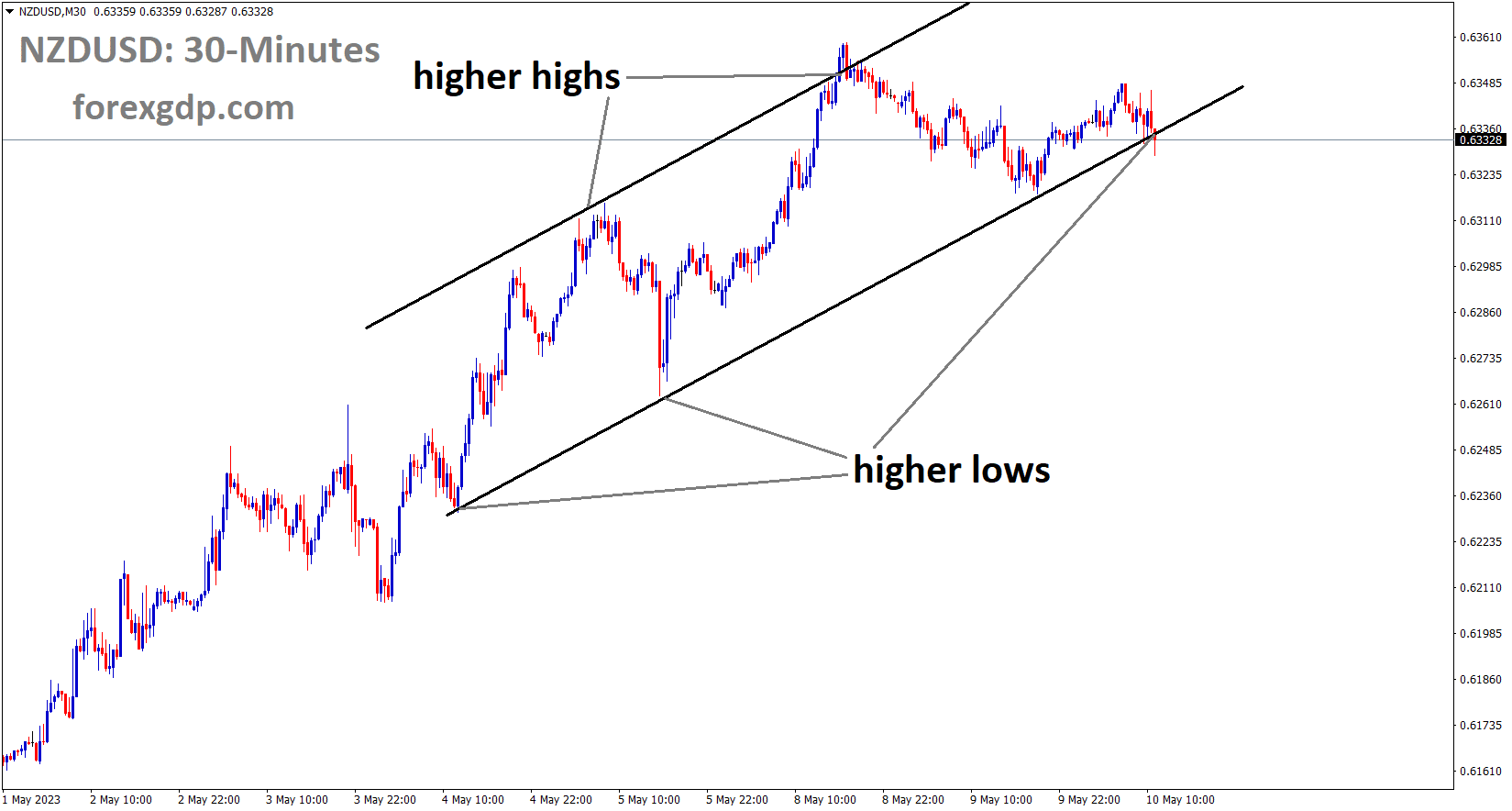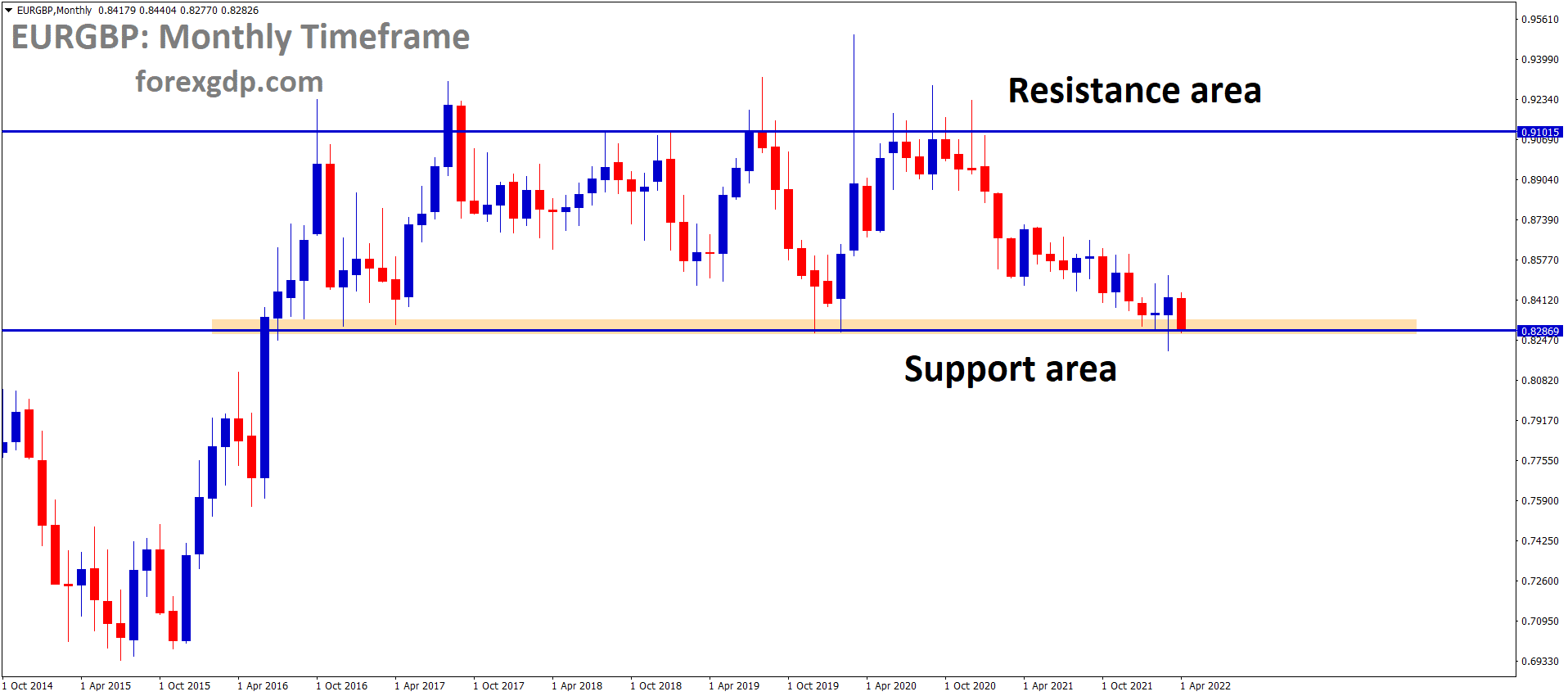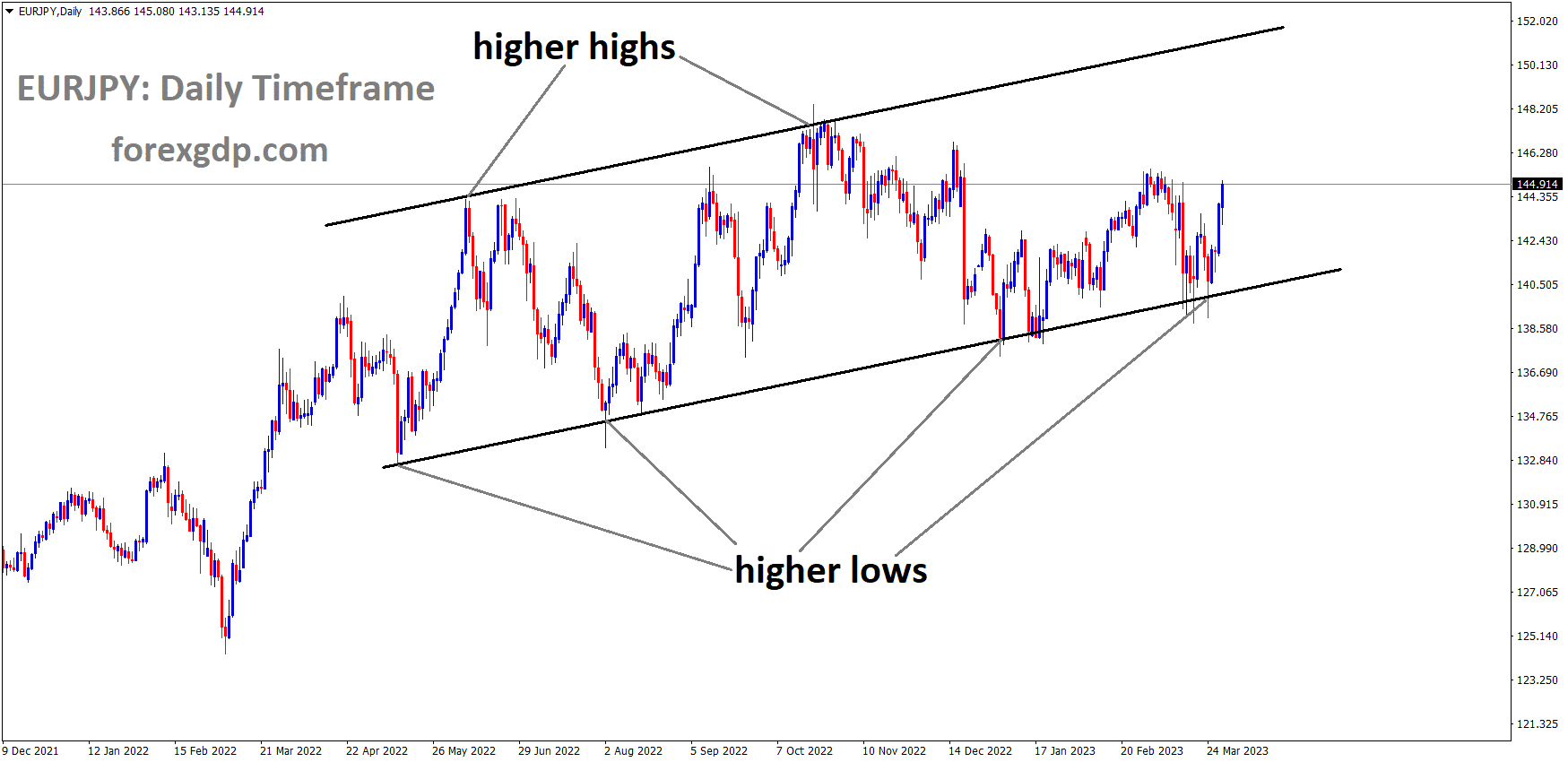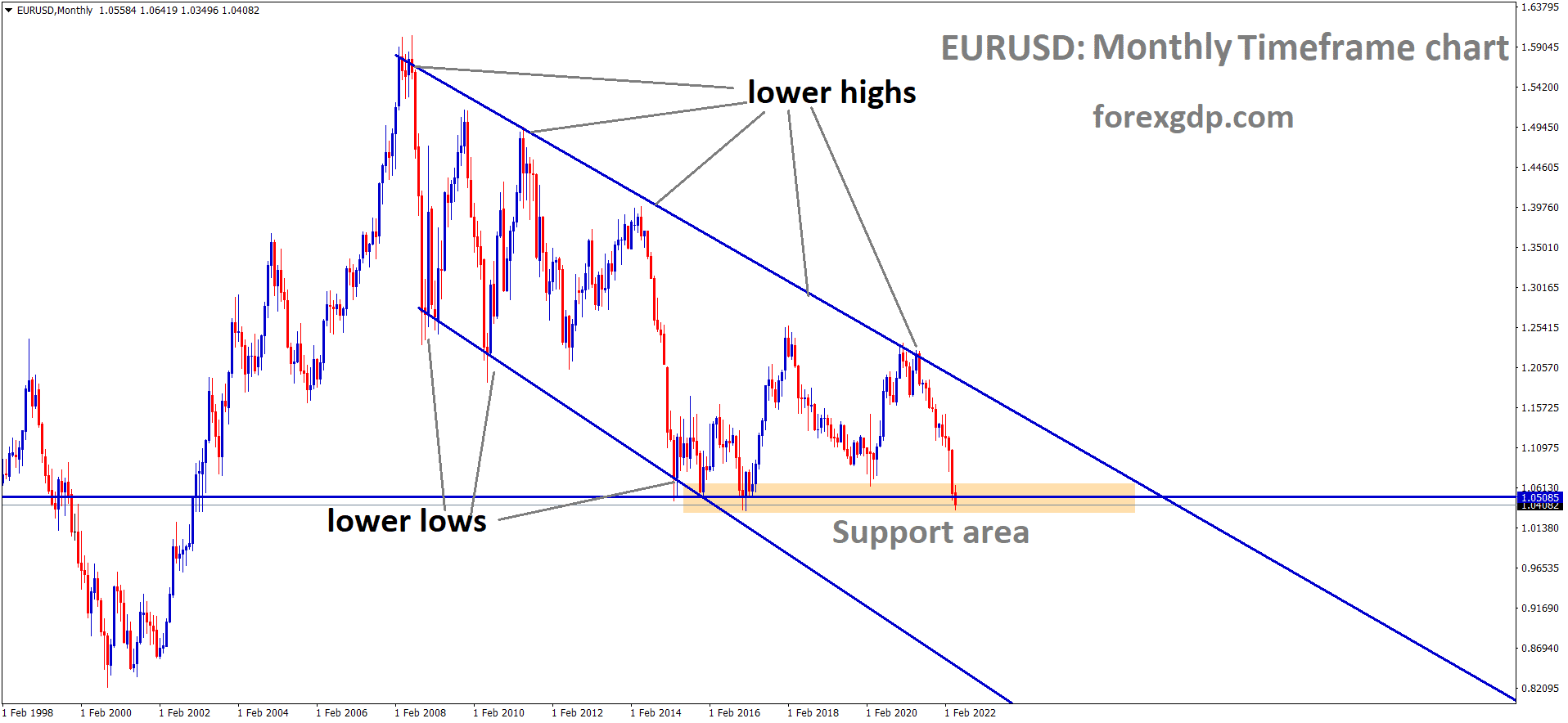EURUSD Analysis
EURUSD is moving in the Box pattern and the market has reached the horizontal support area of the pattern.
According to ECB policymaker and Bundesbank Chief Joachim Nagel, German banks are doing well, and monetary policy is having a positive influence on the economy. We are approaching the conclusion of the rate hike cycle, but we do not know when it will end; inflation will fall in the next months, and the ECB is definitely moving in that direction.
In an interview with Deutschlandfunk on Wednesday, European Central Bank policymaker and Bundesbank Chief Joachim Nagel expressed optimism about the influence of monetary policy. He stated that he is not concerned about German banks. We may be nearing the end of the rate hiking cycle. But we have not finished hiking yet. Core inflation still has to be addressed. On monetary policy, we are staying the course. Very pleased with the ECB’s monetary policies. Lagarde and I share the same policy perspective.
GOLD Analysis
XAUUSD Gold price is moving in an Ascending channel and the market has fallen from the higher high area of the channel.
Gold prices have consolidated ahead of US CPI data, while debt ceiling talks in the US are ongoing. The US CPI is predicted to report at 5.5% year on year in April, down from 5.6% in March.
Treasury rates are surging, and if CPI comes in hot today, the Fed may reconsider its tightening rate hike cycle and require additional hikes.
Gold prices remain elevated as US debt ceiling negotiations continue ahead of important US inflation data due later Wednesday. With no evidence of an upswing reversal on technical indicators, the risk-reward balance is slanted to the upside. Given the lacklustre pace on higher timeframe charts, the focus could shift to crucial support levels if price pressures develop faster. Core inflation metrics such as CPI, PCE, and PPI indicate that inflationary pressures are easing but remain substantially above the US Federal Reserve’s 2% objective. In this regard, US CPI index data due later today will provide more clarity; the core CPI is expected to have softened to 5.5% on-year in April from 5.6% in March. The headline CPI is predicted to remain stable at 5% year on year.
The Fed hiked interest rates by 25 basis points last week, as predicted, but signalled a pause in the climbing cycle. According to CME’s FedWatch tool, markets are currently pricing in 75 basis point rate reduction by the end of the year. If CPI data show that price pressures climbed faster than expected last month, it could lead to a rethinking of Fed rate cuts, especially following Friday’s stronger-than-expected US jobs report. Any increase in pricing pressures could lift US Treasury yields and the US currency, putting pressure on gold. Further moderation in price pressures, on the other hand, could weigh on yields and the US currency, propelling gold towards the 2020 record high of 2072.Much would also rely on how the US debt ceiling talks progress, which would keep gold’s safe-haven bids intact in the interim. Failure to raise the $31.4 trillion federal debt ceiling would have a significant impact on the US economy and would damage the dollar’s status as the world’s reserve currency, according to US Treasury Secretary Janet Yellen on Monday.
USDJPY Analysis
USDJPY is moving in an Ascending channel and the market has rebounded from the higher low area of the channel.
ETF purchases, according to Bank of Japan Governor Ueda, are more beneficial in the current environment of easy monetary policy and resistance to the suffering of the general populace.
Once the economy was in a steady and sustainable phase, we quickly liquidated the ETFs. Do not rush to cancel the YCC and raise interest rates because we will hold a debate about it once the economy is stable and we will provide you with information about it.
Governor of the Bank of Japan Kazuo Ueda stated on Wednesday that the BoJ’s purchase of ETFs supports consumption and capital expenditures by preventing erratic market movements from undermining public trust.It is too early to discuss the details of how the BoJ would sell ETFs. ETFs would probably be sold on the open market if the BoJ were to sell them. We are not ready to start talking about how Boj will end the easy policy. When the price target is about to be reached, we will discuss our exit strategy and properly publicise it. To reach BoJ’s pricing target steadily and sustainably, additional time will be needed.
USDCAD Analysis
USDCAD is moving in the Box pattern and the market has reached the horizontal support area of the pattern.
Oil prices have fallen as a result of recession fears in the US economy. The US debt ceiling meeting was postponed until Friday this week, thus US CPI data is now in the spotlight. FED rate hikes reduce global demand for oil, and OPEC+ already lowered production two months ago.
In the early European session, USDCAD is advancing towards the round-level resistance of 1.3400. After defending its important support level of 1.3374, the Loonie asset has drawn sizable offers. The Loonie asset has received support from a reasonable rebound in the US Dollar Index and a decline in the price of oil. As investor apprehension ahead of the release of the United States Consumer Price Index data is rising, the S&P500 futures have reduced some gains that were added in the Asian session, reflecting a risk-off market environment. On Tuesday, investors were concerned about the US debt ceiling situation, which put pressure on the market to sell US assets. However, when talks between the White House and Republican leaders were postponed until Friday, worries over a US debt ceiling crisis have grown. From the day’s low of 101.53, the USD Index has steadily recovered. By placing their funds into the USD Index, investors are avoiding the volatility caused by US inflation. The rates on US 10-year government bonds are currently in need of improvement. The yield on the US 10-year Treasury is currently less than 3.52%.Republican lawmakers and White House representatives gathered late on Tuesday to discuss US debt ceiling issues as growing concerns about a US Treasury default on required payments are fueling the debate. US President Joe Biden reaffirmed the necessity of lifting the debt ceiling without jeopardising the spending plan at the discussion. Also prepared for a separate conversation over the budget is US Biden.
Crude Oil Analysis
Crude Oil price is moving in the Descending channel and the market has rebounded from the lower low area of the channel.
On the other hand, Republican House of Representatives Speaker Kevin McCarthy held to his position that he would not support an increase in the debt ceiling without the President’s spending plans being curtailed in order to protect the growing budget imbalance. As US President Joe Biden made plain at the meeting that the US economy defaulting is not an option, the street is expecting a bipartisan agreement on Friday. Investors are now more focused on the US Inflation report as talks to increase the US debt ceiling have been postponed until Friday. The monthly headline and core CPI data are anticipated to increase by 0.4%, according to the preliminary report. While annual headline inflation is expected to remain constant at 5.0%, the core CPI, which includes volatile food and energy prices, is anticipated to slightly drop to 5.5% from the previous estimate of 5.6%. A sign of persistently rising inflation might force the Federal Reserve (Fed) to reevaluate the neutral message it sent during the most recent monetary policy meeting.
Goldman Sachs analysts predict that weaker US CPI statistics will likely support a rise in US stock prices. They went on to say that CPI at or below the consensus estimate of 5% might lead to an uptick in stock prices, with the S&P 500 gaining by at least 0.5%.” The S&P 500 might fall by at least 2% on a score above 5.9%, but “a surprisingly strong reading would send stocks sharply lower.”Futures on the NYMEX for West Texas Intermediate have retreated after failing to maintain above the key resistance level of $73.50. Oil prices are battling to maintain recovery as investors worry that continued US inflation may heighten recessionary fears as the Federal Reserve considers raising interest rates even further. Investors will be watching the US Energy Information Administration’s publication of oil inventory data for the week ending May 5 in the coming days. A correction in the price of oil is having an effect on the Canadian Dollar because Canada is the top oil exporter to the United States.
USDCHF Analysis
USDCHF is moving in the Box pattern and the market has rebounded from the horizontal support area of the pattern.
Swiss military personnel train on the European border to defend Ukraine from an invasion by Russia.
For more than 30 years, the Swiss Army has been keeping troops across the border to protect their nation while Ukraine aids in the planning.
In one of the largest military drills conducted in Switzerland in more than 30 years, troops demonstrated their ability to defend themselves in the event of an armed conflict by tossing grenades and firing live ammunition. The exercises, which lasted nine days and involved 4,000 soldiers split across four cantons, took place as calls for the nation to help Ukraine battle the Russian invasion have brought attention to its role in European defence. Last Thursday, a group of infantry soldiers—the majority of whom are civilians serving in their normal military capacity—slowly paced up a hill at the Les Pradieres shooting range. They used smoke grenades to mask their movements before kneeling down to fire at targets. Although the Russian invasion of Ukraine in February of last year was not the reason for the LUX 23 training, the Swiss military claimed it made the exercise even more pertinent.
According to Mathias Tuscher, commander of Switzerland’s Territorial Division 1, both the population’s knowledge and our partners’ readiness to participate in this kind of exercise have significantly altered. Of course, the conflict in Ukraine has a direct bearing on this. Switzerland is under increasing public and international pressure to lift its embargo on the transfer of weapons to conflict areas, but certain political groups worry that doing so would signal the end of the country’s longstanding neutrality in international affairs. According to Mauro Poggia, state councillor in charge of the Security, Population, and Health Department for the Geneva canton, We understand that people confuse the need to support a country under attack with the need to maintain a place for the aggressor, when designated as such, to come talk and find solutions.” There is nothing more annoying than closing doors, hence Switzerland needs to have a permanent exit. This door needs to be secured.
USD Index Analysis
USD index is moving in the Box pattern and the market has rebounded from the horizontal support area of the pattern.
US CPI data today and, more importantly, the escalating debt ceiling battle are putting pressure on the US dollar.
The US House of Representatives’ Kevin McCarthy said they will not permit the US Government to lift the debt limit this time because it has already exceeded US $ 31.1 trillion.
If the debt ceiling cannot be raised, US President Joe Biden stated that the US Government cannot go into default.
On June 1st, Treasury bills and payments are due; if a meeting cannot address this matter, it is huge news that the US Government will shortly go into default.
With only three weeks left until the US may be forced into an unprecedented default, President Joe Biden and top senators promised to meet again on Tuesday but were unable to resolve the impasse. Reuters reported this early on Wednesday in Asia. House Speaker Kevin McCarthy reportedly declared during the discussion that the US will not default on its debt, and US President Joe Biden praised the meeting as positive. The risks of default were grasped by all participants in the discussion, US President Biden added. Additionally, according to Reuters, US President Biden said, “When we get through this, I am thinking about looking at months from now to see what the court would say.” “I have been considering the 14th Amendment,” Biden continues. But he continued, “It would need to go to court. Speaker of the US House McCarthy is quoted in the news as saying that the parties reached an agreement for their staffs to meet this week and for the principals to meet again on Friday to continue talking.
In addition to the remarks made by Biden and McCarthy, the US Treasury Borrowing Advisory Committee also made statements regarding the debt ceiling negotiations after initially stating that it was “deeply concerned” about the failure to resolve the statutory debt limit. Any issuer whose credit depends on support from the US government will be directly impacted. It is dangerous and irresponsible to keep debating extending the debt limit with the financial markets on edge. Long-term debt ceiling negotiations will significantly raise taxpayer costs and intensify market turmoil. The debt ceiling must be raised as soon as possible, but a more long-term solution is also necessary. Treasury’s failure to pay interest or principal on time would have an impact on both the financial markets and the actual economy. It is time to adopt an alternate strategy for enforcing financial accountability, such as mandating that budgetary caps be raised concurrently with allocations. It is time to implement a different strategy for ensuring financial responsibility by completely abolishing the debt ceiling.
GBPUSD Analysis
GBPUSD is moving in an Ascending channel and the market has reached the higher high area of the channel.
A rate increase of 25 basis points by the Bank of England tomorrow is 98% certain. Since December 2021, there have been eleven hikes.
Although the UK economy is doing well, businesses and households are concerned about the double inflation.
If a rate hike happens tomorrow, the value of the pound will increase.
Due to the FED’s promise to halt its rate hike cycle, the US dollar is depreciating from its highs, providing market support for higher GBPUSD prices.
The GBPUSD exchange rate is unchanged today but is advancing towards the previous highs reached in the European session on Tuesday, near 1.2639, displaying signs of strength. The price at the Toyo open has risen from a low of 1.2608 to reach a high of 1.2634 thus far. In anticipation of significant events this week, such as the Bank of England policy decision, the markets are uneasy. Since losing ground from where it touched 1.26680 at the beginning of this week, the pair has been correcting higher. Since April 26, 2022, this level has been at its highest. Since December 2021, the BoE has increased interest rates 11 times in an effort to reduce double-digit inflation. The probability of a 25 bps hike from the BoE is predicted by the markets to be 98%. Stronger-than-anticipated economic figures in the UK are also helping the pound, giving investors hope that the country might perhaps avoid a recession after all. Sterling has also benefited from a weaker US dollar, which has been under pressure due to market speculation that the Federal Reserve is nearing the end of its run of rate hikes. According to experts at Rabobank, last week’s US labour market statistics that came in higher than expected underpinned the stickiness of wages and inflation pressures on the other side of the Atlantic. As a result, some of the anticipated Fed easing for the end of this year was withdrawn by the market.
In our opinion, the Fed will not ease its stance until the next year. As rate decreases in 2023 are now completely priced in, we expect the USD to receive some support in the upcoming months. On a three-month horizon, we see potential for GBPUSD to revert to 1.22, the analysts at Rabobank said. The US inflation data, which will be released today, will provide us additional direction in the short term regarding the fight against inflation in the world’s largest economy. According to experts at TD Securities, core prices likely remained steady in April, with the index climbing a solid 0.4% MoM for the second consecutive month. This is because goods inflation is expected to have gotten stronger. While rising petrol prices will undoubtedly increase non-core inflation, housing costs are likely to remain the big unknown. Our MoM projections for total/core prices indicate 5.0%–5.5% YoY growth. Regarding this data release, the Federal Reserve has left the door open for a pause after a 500bp rate hike. The Fed is still worried that inflation is too high and will increase rates further as necessary. The event is significant because the Fed depends heavily on data and because going ahead, policy will be decided at each meeting.
AUDUSD Analysis
AUDUSD is moving in the Box pattern and the market has fallen from the resistance area of the pattern.
After Australian retail sales came in weaker than anticipated, the Australian dollar declined. China’s trade surplus is bigger than anticipated, which makes it impossible for the Australian Dollar to rise. US debt ceiling discussions were postponed until Friday. A lot of attention is being paid to the US CPI statistics; a higher-than-expected number will hurt the Australian dollar, while a lower reading will have the opposite effect.
As it struggles under the weight of recent weaker second-tier Australian data and the market’s caution, the AUDUSD oscillates around its intraday high, moving as recently as 0.6770–0.6770. This is happening early on Wednesday. As unsuccessful debt ceiling negotiations in the White House were coupled with growing concerns about the impact on the US banking system, risk appetite has remained low. The market’s preparations for the US inflation data, specifically the Consumer Price Index for April, may be on the same lines. US Senate Majority Leader Chuck Schumer informed President Obama of the crucial debt-ceiling talks’ lack of progress. After that, according to Reuters, US President Joe Biden deemed the discussion “productive” and stated that House Speaker Kevin McCarthy had promised not to let the country default on its debt. Speaker of the US House McCarthy is quoted in the news as saying that the parties reached an agreement for their staffs to meet this week and for the principals to meet again on Friday to continue talking. The worldwide rating juggernaut Moody’s recently stated, “What once seemed unimaginable now seems a real threat,” in response to the White House’s displeasure.
It is important to note that Pierre-Olivier Gourinchas, the chief economist of the International Monetary Fund , raised banking concerns on Tuesday after the Federal Reserve’s quarterly survey of bank loan officers, released on Monday, noted the detrimental effects of increased rates on credit conditions. In terms of the data, Australia’s Roy Morgan Business Confidence fell to 90.2 in April from 93.6 in March. Conversely, the US sentiment indicators have also been negative, and the previous day’s Australian retail sales and China trade data disappointed AUD/USD bulls. In the midst of these manoeuvres, the US Dollar Index drops to 101.55, breaking its two-day winning streak, and the US 10-year Treasury note yields, which had been climbing for the previous four days straight, remain stagnant near 3.51%. The AUD/USD exchange rate may continue to rise before the important US CPI data due to expectations of lower US inflation and the US politicians’ capacity to address the debt-ceiling expiration, notwithstanding the most recent setback.
NZDUSD Analysis
NZDUSD is moving in an Ascending channel and the market has reached the higher low area of the channel.
This month, the RBNZ is sounding more hawkish than the FED.
According to domestic data, the New Zealand economy is doing decently, but greater inflation is a result of the January 2023 cyclone.
Due to this rate rise plan, the RBNZ is certain of its course for the rate-hiking cycle and the New Zealand Dollar is strengthening.
Following the day’s decline, the NZDUSD pair draws new purchasing and maintains a marginally positive stance going into Tuesday’s European session. The pair is currently hovering just below the mid-0.6300s and is still very close to the more than one-month high reached earlier this week. The market’s expectations for the Federal Reserve’s (Fed) next policy move will be significantly influenced by the US CPI report, which should fuel demand for the US Dollar and provide the NZDUSD pair new directional momentum. As worries about a full-blown banking crisis in the US ease, the cautious market tone is seen as supporting the safe-haven Greenback to some extent while acting as a barrier for the risk-averse Kiwi.
However, the NZDUSD pair’s downside is still cushioned, at least temporarily, as the USD bulls appear hesitant in the wake of the rising consensus that the Fed is drawing to a close its year-long cycle of rate hikes. In addition, the Reserve Bank of New Zealand’s anticipated future rate increases should assist in containing losses for the major. The fundamental environment, however, points to an upward trend for spot prices as the direction of least resistance. Even from a technical standpoint, this week’s prolonged breakout through a trend line that slopes downward and extends from the YTD peak set in February favour optimistic traders and lends support to the upbeat view. As a result, it appears that a return to testing the April monthly swing high, in the vicinity of 0.6380, is highly likely. However, ahead of Thursday’s release of the Chinese inflation numbers, worries over China could serve as a drag on the NZDUSD pair.
Don’t trade all the time, trade forex only at the confirmed trade setups.
Get Live Free Signals now: forexgdp.com/forex-signals/

